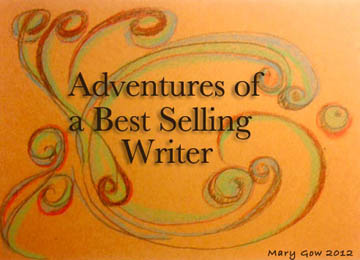[wpvideo M1HXqjrf]
Do you think there’s something spiritual about open source?
It’s about “paying it forward.”
A certain noble kindheartedness is inspired and exemplified by the WordPress community.
This was my second WordCamp.
There was plenty to soak in this year. The conference was at the University of California-San Francisco Mission Bay Campus Conference Center. It was a jam-packed Saturday, 9am to 6pm with a yummy lunch in the middle. Sunday was a pure developers day at another location.
One thing that stood out for me is the preview of the designerly new 2012 theme.
Taking yellow highlighter through my pages of notes, I numbered them. Hope you find something useful:
Morning Sessions
1) I started off the day hearing Chris Coyier speak about how to make your site run faster. He blogs at http://www.chriscoyier.com. He mentioned g zip compression, Code Kit, W3 Total Cache plug-ins. None have I heard of but if Chris recommends it I’m going to check into it.
2) Then I heard Ilig Polihronov speak about High Performance WordPress. He advised that we disable all plug-ins you don’t use. And then spoke about P3-profiler. His slides are at slideshare.net/vnsavage.
3) Next, I sat in on the the talk about BB Press. I don’t even know what BBPress is! Found out though. Want a forum on your website? Check out BBPress.org. The latest version 2.0 is WAY different from 1.0 and can do a LOT more.
4) Kurt Payne spoke about fast plug-ins. He wrote the P3 plug-in. You can see his slides at http://x.co/wcsf12
The State of the Word with Co-Founder Matt Mullenweg was at 11am (see above).
5) Mullenweg shared that he’s reading Mindless Eating, Why We Eat More Than We Think, by Brian Wansink. It’s about what Wansink calls the “mindless margin” of a hundred calories. One Hundred over each day equals gaining ten pounds a year, and a hundred less a day equals losing ten pounds.
It’s those little things we do every day that add up in the long run.
Beginning in 2010 WordPress releases a default theme each year and this year the 2012 default them is being designed by Drew Strojny, of Theme Foundry. More about that later.
There’s a new collaboration space for WordPress fans to get involved and you can find out more at WordPress.org’s website. Click on the “Get Involved” tab.
The number of new domains that are WordPress sites grew from 12 percent last year to 16.7 percent this year.
Matt said his Retina Mac is the best computer he’s ever owned.
His blog is at ma.tt. (I like that there’s so many photos from his travels).
The Scottsdale Convention & Visitors Bureau is a WordPress site.
People Magazine, CNN and the New York Times also use WordPress.
Charity Water, SCOTUS (the Supreme Court of the United States) Blog, IFMR, One Blade Magazine, and 3F Fashions are some of the long list of companies using WordPress.
After Lunch
6) Isaac Keyet spoke about the State of Mobile. Favorite quote: “The future is action-centric.”
7) Alex King spoke about the State of the Theme. He said there’s 1,574 themes and 53 million theme downloads. New themes to consider are submitted at rate of ten a day. At alexking.org he talks about how to use plugins.
The Business of Code
8) Adii Pienaar, the founder of Woo Themes (260,000 users). He lives in South Africa.
“There’s no such thing as fast money! Open source susses out when you’re not being sincere and in it just for the money.”
“Freemium is a distributon channel only.” You still need a real revenue model like a limited free plan (paraphrasing).
Woo Themes designed the Menu feature for WordPress.
Happy Tables
9) Noel Tock spoke about how Happy Tables software helps restauranteurs develop their own websites.
How Not to Design a Theme
10) Drew Strojny, of Theme Foundry, spoke about how not to design a theme. Strojny is leading the design of the new 2012 default theme for WordPress. He mentioned Carl Jacobi, a famous German mathematician who advocated inverting as a way to solve challenges. A lot of issues can be resolved in their reverse form.
Thinking along those lines, here’s how not to design a theme:
1. Waste lots of time early and don’t sketch and share ideas.
2. Ignore work done before. Starting fresh and building your own.
3. Don’t make WordPress look like a CMS.
4. Don’t use a grid – forget consistency and readability.
5. Use lots of color and texture.
6. Disregard the theme customizer.
7. Forget about mobile devices.
8. Don’t use percentage based widths.
9. Don’t use the rem (root em) unit.
10. No CSS3 gradients.
11. Don’t use web fonts.
12. Don’t get any help from the community.
To see the beautiful new 2012 theme go to: twentytwelvedemo.wordpress.com!
Building Your Audience as a Writer
This was my favorite talk of the conference.
11) Leo Babauta, who writes a blog at Zen Habits, said we have 2 minutes to impress the viewer or they’re gone forever.
Great content solves the reader’s problem like how to knit, garden, meditate. And do it in a way that is easy to read and say it an way that readers will pass it along.
Babauta writes about simplicity. He said “People are craving simplicity.
Figure out what sets you apart!”
He doesn’t believe you need to have ads on your site. Instead, monetize your content through ebooks, courses, and membership sites.
All of Babauta’s work is uncopyrighted. Why? He doesn’t think it’s worth his time trying to track down copycats. Instead he embraces them by allowing others to reuse his material and remix it.
People are spreading his work for him. As a result of the experiment to give his stuff away, his audience has grown faster than ever!
In essence good content will get your readers to spread your work for you. Babauta doesn’t believe writers need to know marketing.
How to Run a Small Country Using the P2 Theme
12) Pete Davies of Automattic said they use the P2 theme all the time. It’s like a virtual space. Teams have their own P2 blogs. It has easy posting and commenting threads.
And it’s great for personal to-do lists too! For more info go to P2theme.com for “Blogging at the speed of thought.” P2 works on mobile too.
Conclusion
No doubt about it, WordCamp 2012 is a true ArtSpirit taking massive action and inspiring massive action! I send a mega heart-filled thank you to WordPress for your quality and commitment.
p.s. The chocolate-filled creme puffs were heavenly.
Related:
–Speaking for Millions of Petals in the Dust
–43,000 Free Learning Resources at Your Fingertips
–14 Tips from Wayne Freedman on Storytelling


